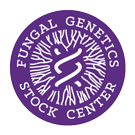Strain: Neurospora crassa
FGSC #9388
Reporting Genes: spco-4;col-4
Species: crassa
Allele: R2367,B148
Alternate Strain Number: OG23
Depositor: OG
Linkage Group: VIIL,IVR
Genes

Reporting Genes: spco-4;col-4
Species: crassa
Allele: R2367,B148
Alternate Strain Number: OG23
Depositor: OG
Linkage Group: VIIL,IVR
